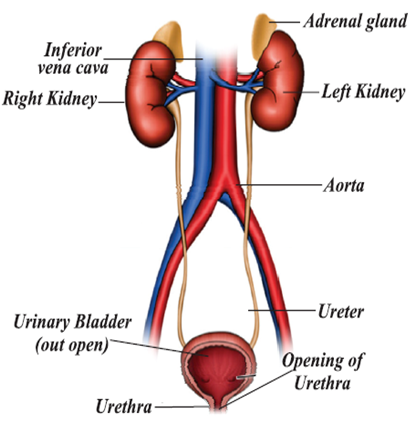CBSE
Class 10 Class 12
Organisms get rid of gaseous wastes generated during photosynthesis or respiration. Other metabolic activities generate nitrogenous materials which need to be removed. The biological process involved in the removal of these harmful metabolic wastes from the body is called excretion.
The excretory/urinary system consists of :

Plants have no special organs for removal of wastes. The waste products of respiration and photosynthesis are used as raw materials for each other. Oxygen gas produced as a by-product of photosynthesis is used up during respiration and carbon dioxide produced during respiration is used up during photosynthesis.
Excretion is carried out in the plants in the following ways: